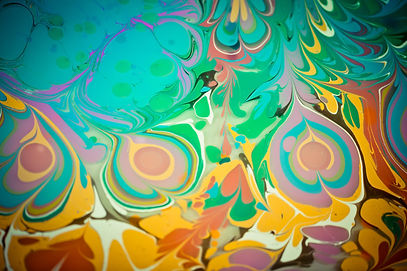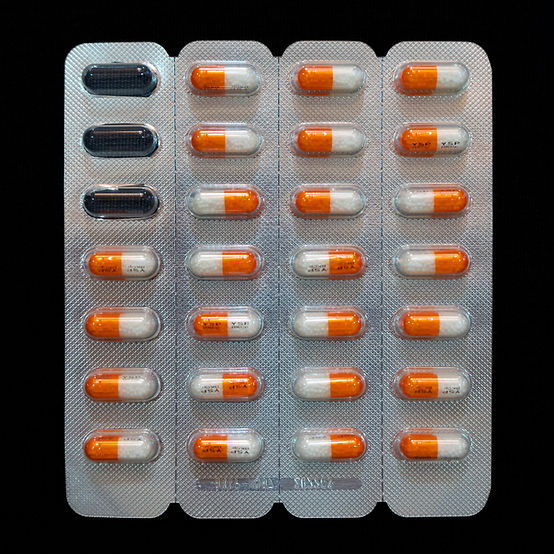.png)
Plan-It S.A.F.E.R.

.png)
Other Drugs
Hallucinogens, Cocaine, & Prescription Drugs
The following page covers some basic harm reduction information for safer use methods of different substances. Please remember to test your drugs & never use alone!

Hallucinogens
Hallucinogens are a diverse group of substances known for altering one’s perception of reality, and causing shifts in mood and cognition. There are two categories: Classic hallucinogens and dissociative drugs.
Classic Hallucinogens:
-
LSD (acid)
-
Psilocybin (magic mushrooms)
-
MDMA (molly, ecstasy)
-
Mescaline (peyote, buttons)
-
DMT
Dissociative Drugs:
-
Ketamine (special K)
-
PCP (angel dust)
-
Salvia
Where do they come from?
Several of the hallucinogens, namely psilocybin, LSD, salvia, and peyote are derived from mushrooms or plants, while others are synthetically produced.

Short-Term Effects
JUST CLASSIC HALLUCINOGENS
-
Intensified emotions
-
Altered perception of time
-
Heightened sensory experiences (ex. colors looking brighter)
-
Spiritual experiences (ex. ego death)
-
Synesthesia or blurred senses (ex. hearing colors)
BOTH
-
Increased blood pressure, temperature, and heart rate
-
Auditory, visual, or tactile hallucinations (hearing, seeing, or feeling things that aren't there)
-
Euphoria
-
Panic or Paranoia
-
Nausea
-
Lack of coordination
JUST DISOSSIATIVE DRUGS
-
Feelings of floating or detachment from the body
-
Numbness
-
Memory loss
-
Analgesia (pain relief)
-
Aggression
Long-Term Effects
-
Impaired memory and concentration
-
Flashbacks
-
Prolonged depression or anxiety
-
Decreased motivation
-
Persistent Psychosis
-
Disorganized thinking, paranoia, visual and mood disturbances
-
-
Hallucinogen Persisting Perception Disorder (HPPD)
-
Re-experiencing the perceptual disturbances that happened during a trip while sober
-
This condition is very rare
-


Surviving
a
Bad Trip

Sometimes, psychedelic experiences take a turn for the worse. Here are some hallmarks of a 'bad trip:'
Extreme paranoia
Extreme/sudden mood swings
Emotional distress
Negative thought spirals
Frightening hallucinations/delusions
Here are some tips for getting through a bad trip
Remember to breathe!
Mindful breathing has been proven to reduce anxiety and stress! Breathe in deeply through your nose, hold for a couple seconds and exhale through your mouth. Repeat as necessary.
Talk to someone
Reach out to a trusted sober friend and let them know what you're experiencing. Talk through the scary thoughts instead of keeping them inside.
Find a distraction
With the proper distraction, it's easier to break out of negative thought loops. Try experimenting with interesting sights, sounds, or textures. For some people, it helps to make art or listen to music. Tip: Have some distractions prepared before you start tripping so that everything is ready in case you need it.
Practice acceptance
Accept, without self-judgement, that you are having a bad trip and try to approach your negative thoughts with compassion and curiosity. Remind yourself that you are safe and that this experience is temporary. Try repeating a calming mantra.
Contact the Fireside Project
Reach out to this psychedelic peer support hotline through call or text. Volunteers are trained to listen compassionately and non-judgmentally to people in the midst of hallucinogenic experiences.
62-FIRESIDE is available 7 days a week from 11 am - 11 pm.

Prescription Medication
Two of the prescription medications that are most commonly taken recreationally are stimulants meant to treat ADHD (Adderall, Ritalin), and benzodiazepines prescribed for anxiety (Xanax, Valium).

Short-Term Effects
Stimulants for ADHD
-
Increased energy and alertness
-
Increased impulsivity
-
Talkativeness
-
Restlessness
-
Increased heart rate and blood pressure
-
Anxiety or agitation
-
Mood swings
-
Loss of appetite
-
Increased libido
Benzodiazepines for anxiety
-
Drowsiness
-
Lightheadedness
-
Poor coordination
-
Slowed heart rate
-
Feelings of calmness
-
Euphoria
-
Mood swings
-
Muscle relaxation
-
Slowed reaction time

Long-Term Effects
Stimulants for ADHD
-
Poor sleep
-
Weight loss
-
Increased risk of stroke
-
High blood pressure
-
Irregular heartbeat
-
Anxiety, depression, paranoia
Benzodiazepines for anxiety
-
Poor sleep
-
Poor concentration
-
Memory problems
-
Lethargy
-
Lack of motivation
-
Anxiety, depression, paranoia

Cocaine
Cocaine is a central nervous system stimulant with high addiction potential. It comes in the form of a fine white powder that is derived from the leaves of the coca plant, which grows in South America.

Strategies for Safer Snorting

01.
Make sure the powder is very fine. Larger pieces do more damage to the nasal passageways.
02.
Never snort cocaine with rolled up bills, which are often covered in bacteria.
03.
Alternate between nostrils, and rinse them out with saline after snorting.
04.
To avoid transferring infections, never share snorting tools such as straws.
Use Vitamin E oil or petroleum jelly to sooth your nostrils and help them heal.
05.
General Safer Use Tips
Test your drugs
Always test your substances--especially pills and powders--for fentanyl contamination, using a testing strip.
Start low and go slow
Start out by taking a low dose, especially when trying a substance for the first time. You can always take more of a substance later on, but once you've consumed something, you can't undo it.
Your kidneys will be working extra hard to filter out the substance in your blood, so be kind to them and drink water!
Stay hydrated
Never Use Alone
Find a trusted sober friend or ‘trip sitter’ that can offer emotional support and ensure your safety throughout the duration of your experience. If you're by yourself, contact the Never Use Alone hotline at 1-800-484-3731, and a representative will stay with you on the line to make sure you're safe.
Stick to one substance at a time! Mixing substances can increase the risk of
dangerous side effects including heart attacks, strokes, and seizures. Combining opiates or stimulants with alcohol is especially dangerous.
Avoid drug mixing

Set & Setting
Before taking a substance, make sure to evaluate your set and setting to determine if you have
proper conditions for a drug experience.
SET
Your mindset going into the experience
SETTING
Your immediate surroundings
Try asking yourself the following questions...
Do I feel prepared to experience a trip/high?
Am I with people that make me feel safe and supported?
Do I feel comfortable and relaxed?
Do I have any comfort objects I might need? (blanket, music, etc)
REMEMBER!
The length of a trip/high can last anywhere from minutes to hours depending on what substance you take and how much. Do some research in advance so you can estimate the length of your experience.